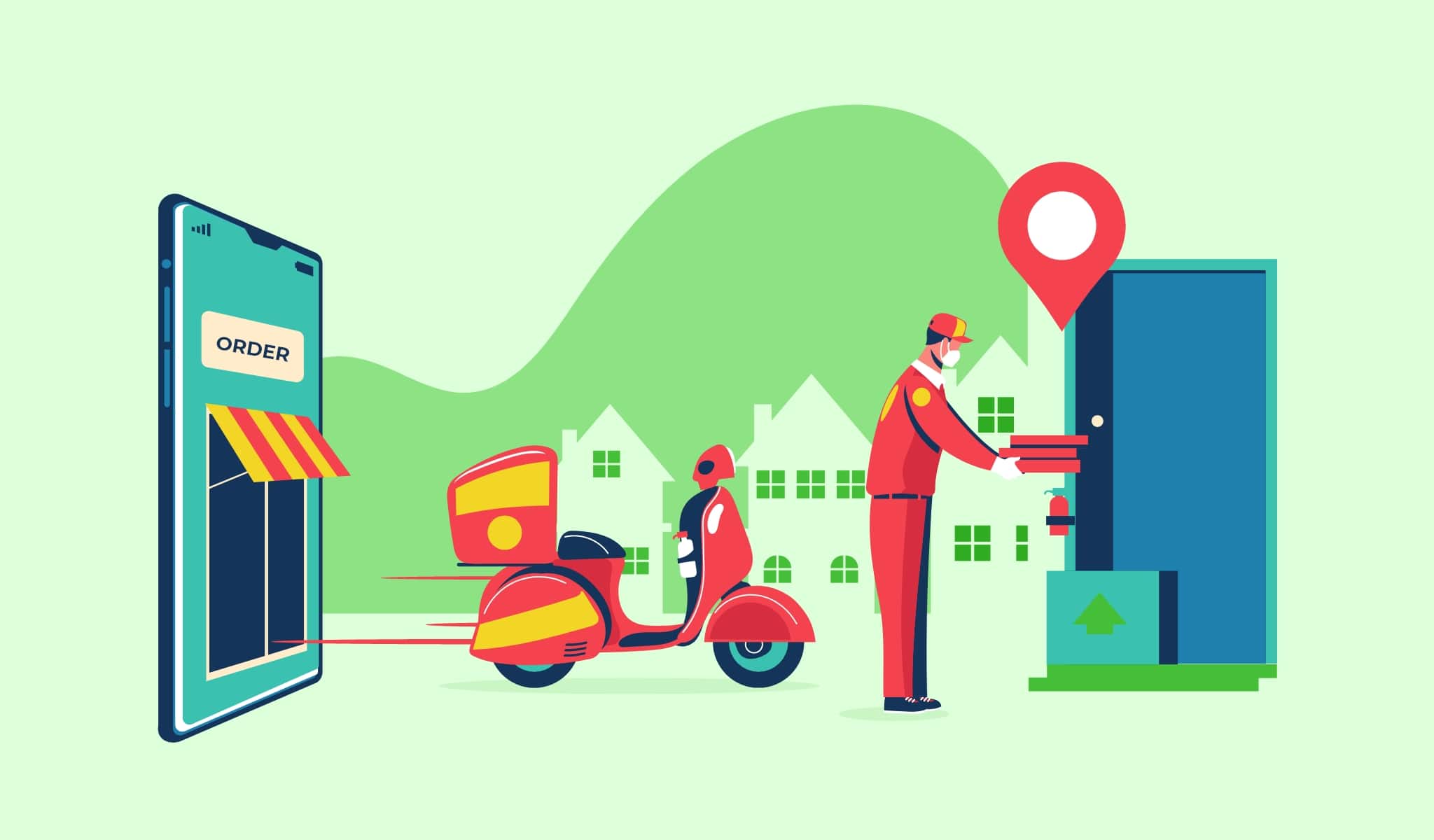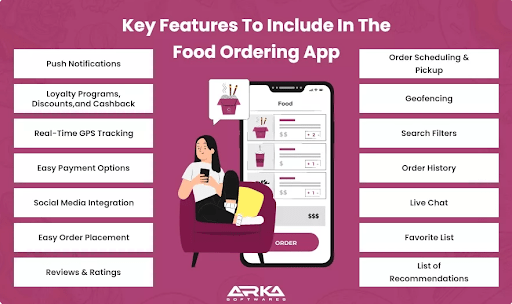Apps that transport food are growing in popularity because they make it quicker and easier for consumers to get their favourite meals delivered straight to their door.
You may order your favourite foods from a variety of restaurants and have them delivered to you quickly with the use of a meal delivery app.
People who lack the time or energy to go out to dine have become huge fans of these applications due to their ease. Additionally, they give customers fantastic discounts on food orders, which adds to their allure.
These days, we can order a delicious dinner to be brought straight to our home with a few touches on our iPhones. All of this is now feasible because of the development of on-demand meal delivery services.
We’ll look at the essential components of a successful on-demand food delivery app development service that help it stand out in the competition in this article.
Market Data for Food Delivery Apps on-Demand
Customers desire more effective and smooth food delivery applications, thus there is an increasing need for premium and user-friendly meal delivery apps.
Due to the influx of several new and established businesses into the market in recent years, there is now greater competition and a higher bar for food delivery apps.
Modern technologies like artificial intelligence and machine learning, which enable companies in the meal delivery industry to offer better customer service and more customised eating experiences, have helped the meal delivery market grow.
Growth in the delivery of meals on demand It is anticipated that the app industry will grow in the next years as developers work to enhance user experiences, expand into new markets, and increase the operational effectiveness of their enterprises.
For companies wishing to enter the market as well as creators of Delivery apps, this offers significant potential. These are some noteworthy market data points.
- By 2024, it’s anticipated that online meal delivery services will bring in $32 billion in revenue.
- Approximately 60% of Americans place at least one weekly restaurant delivery order.
- According to a recent poll, six out of ten customers said they were more inclined to utilise food delivery services following the COVID epidemic.
- With 63% having done so in the last three months, Gen Z and Millennials (those between the ages of 18 and 29) are the most likely to utilise a delivery app or website.
Important Elements of the Meal Delivery App
1. Push Notifications
The capability of a food delivery app development company to notify customers via push notifications when their order status changes is among its most crucial features.
Customers may get information on purchase confirmation, estimated delivery time, and any changes or postponements to the delivery process.
Customers benefit from being informed and are less likely to become frustrated or confused as a result. By providing discounts and exclusive deals to your customers through push notifications, you can maintain their interest in the app.
2. Cashback, Discounts, and Loyalty Programmes
Offering discounts and loyalty programmes is a good approach to encourage regular app usage. Customers may redeem their points for free meals or future purchases if they place an order and accumulate a particular amount of points.
Offers for cashback might be included as an extra incentive to entice users to use the meal delivery service over rivals. Not only do these additions increase user satisfaction, but they also encourage extended app usage.
3. GPS Tracking and Navigation in Real-Time
The real-time GPS tracking and navigation features of a meal ordering app are essential since they provide consumers with the most recent delivery schedule information.
Businesses may help their clients be more prepared for the arrival of their items by giving them real-time information on the position of the delivery truck.
To help delivery staff find the consumer, navigation tools can be implemented, which lowers the possibility of mistakes or delays.
4. Easy Payment Options
A meal delivery app has to include a variety of payment options to appeal to a wide audience. Accessible payment options should include credit and debit cards, digital wallets, and cash on delivery.
Customers should be able to finish their orders quickly and simply using a simple, secure payment method.
5. Social Media Integration
For your consumers, the option to register using a social network profile simplifies the process of creating an account and tracking orders.
By checking in with their social network accounts, customers can share their experiences with friends and family and save time and effort. This may aid in promoting the app and attracting new users.
6. Easy Order Placement
Just a few clicks are required for users to place an order.
Customers should be able to easily customise their orders, and the menu should be simple to understand. Customers should be able to save time and effort by placing orders quickly and easily.
7. Reviews & Ratings
A meal delivery app’s reviews and ratings are crucial components since they give users insightful knowledge about the app’s calibre. It should be possible for patrons to evaluate restaurants and offer comments on the quality, delivery, and service of the meal.
This gives other consumers useful information to make judgements and gives restaurants insightful information on how to better serve their patrons.
This gives other consumers useful information to make judgements and gives restaurants insightful data on how to better serve their patrons.
8. Order Placement and Collection
Features that allow for order scheduling and pickup are helpful for customers who require a quick lunch and are constantly on the go. It should be possible for customers to plan the pickup time and place orders ahead of time.
This functionality will be very useful to those who are always on the go and don’t have much time to wait for deliveries. When purchases are picked up in a well-organized manner, customers receive their items quickly and undamaged.
9. Geofencing
A meal delivery app’s geofencing feature is useful since it enables restaurants to market to customers who are physically nearby. Customers who are in a specific area around the restaurant can receive discounts and promotions using this service.
For instance, a consumer may receive a push notice about a special offer or discount if they are in close proximity to a restaurant. By adding this feature, restaurants will be able to draw in and keep more patrons, which will increase sales.
10. Search Filters
The search criteria on a food ordering app are crucial since they let users quickly narrow down their selections and get exactly what they’re craving.
Options like cuisine type, pricing range, delivery time, and ratings can be included in filters. Instead of having to browse through pages of alternatives, customers should be able to quickly search through the menu to discover precisely what they’re looking for.
11. Order History
One of the most useful features of any meal-ordering app is the ability for customers to check their order history.
Clients ought to have access to a history of all their orders, including the order’s information, date, and time.
Customers may instantly repurchase their favourite meals or repeat an order from a prior date using this function, which helps them save time.
12. Live Chat (Chatbots Integration)
The live chat feature of a meal-ordering mobile app development company in Delhi is useful since it lets consumers obtain immediate replies to their queries. A customer should be able to speak with a person or chatbot in real time if they have any queries or require help placing a purchase. Having this choice can increase customer satisfaction and reduce the likelihood of any issues.
13. Favorite List (Restaurant and Dish)
Customers may bookmark their favourite restaurants and foods for convenient access in the future with the use of a favourite list, a valuable feature seen in food delivery applications.
It should be easy for users to add and remove products from their “favourites” list and get a summary of the things they order most often. This feature not only saves time but also makes it simple for customers to keep track of their favourite eateries and menu items.
14. List of Recommendations
A list of suggestions can help an app that lets users order food from nearby establishments by introducing them to new restaurants and companies. The suggestions may be predicated on the client’s location, tastes, and previous order history.
It should be simple for customers to examine the menu, browse the suggestions, and make an order. This feature not only helps patrons explore more options, but it also gives restaurants a chance to grow their clientele and increase revenue.
Conclusion
The way we order and eat meals is evolving due to applications that provide food on demand. These applications are a crucial component of the food sector since they provide a smooth and practical experience for patrons and eateries alike.
With customer behaviour shifting and technology continuing to advance, on-demand meal delivery has a bright future ahead of it and is expected to get even more inventive and accessible.
On-demand food delivery app development may cater to several needs such as being a food enthusiast, a working professional, or someone simply seeking a simple and fast lunch.


